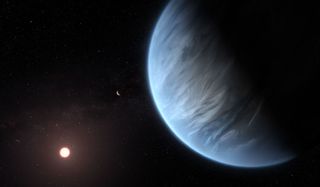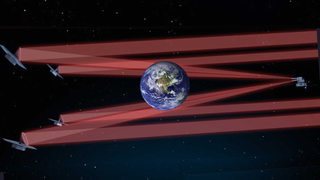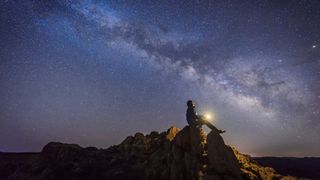Search for Life
Latest about Search for Life

This strange bacteria aligns to Earth's magnetic field and needs friends to survive
By Jessica Rendall published
A unique type of bacteria appears to have social groups — left alone, they'd die.

Doubts over signs of alien life on exoplanet K2-18b are rising: 'This is evidence of the scientific process at work'
By Sharmila Kuthunur published
An independent analysis of recent data from K2-18b casts doubt on claims of detecting alien life on the distant exoplanet.

The pursuit of truths: A letter on the boy who cried aliens (op-ed)
By Darryl Seligman, Adina Feinstein published
As scientists, we must not forget our collective direction: the pursuit of truths and our responsibility to share these truths — and only these truths — with humanity.

Did we actually find signs of alien life on K2-18b? 'We should expect some false alarms and this may be one'
By Sharmila Kuthunur published
Last week, scientists announced they found the "strongest evidence yet" of alien life beyond our solar system. However, the scientific community remains skeptical.

Alien life could exist on Saturn's big moon Titan — but finding it will be tough
By Victoria Corless published
Alien life could exist on the huge Saturn moon Titan, but probably not in the abundance scientists once hoped, according to a new study.

Area 51: What is it and what goes on there?
By Robert Lea last updated
Reference Area 51 is a U.S. military base that has become synonymous with tales of UFOs, government cover-ups and potentially testing alien technology.

How rare are inhabited worlds in the universe? The 'LIFE' space telescope fleet could find out
By Keith Cooper published
The LIFE mission would feature four space telescopes acting together to search for biosignatures on rocky planets in the habitable zones of their stars.

The Fermi Paradox: Where are all the aliens?
By Daisy Dobrijevic last updated
Reference The Fermi Paradox seeks to answer the question of where the aliens are. After all, the universe is incredibly old, big and filled with potentially habitable planets.

Massive star explosions may have triggered two mass extinctions in Earth's past: 'It would be terrifying.'
By Sharmila Kuthunur published
Two nearby explosive massive star deaths, or supernovas, may have triggered mass extinction events in Earth's distant past, new research suggests.
Breaking space news, the latest updates on rocket launches, skywatching events and more!

